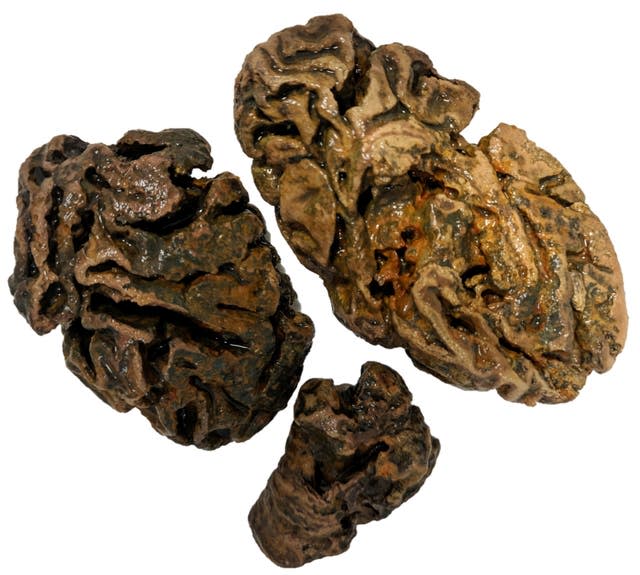Researchers create new archive of ancient human brains
UK researchers have created a new archive of ancient human brains which challenges ideas of how they are preserved.
The record of ancient brains highlights the different environments they can be saved in, ranging from the frozen Arctic, to dry deserts.
The collection of shrunken, discoloured samples was found preserved in all manner of people, from Egyptian and Korean royalty, through British and Danish monks, to Arctic explorers and victims of war.
It gives researchers the chance to analyse the early evolution of humans.

Many of the brains were up to 12,000 years old, and found in records dating back to the mid-17th century.
The ancient human brains were found across a range of different sites, including the shores of a lakebed in Stone Age Sweden, the depths of an Iranian salt mine around 500 BC, and the summit of Andean volcanoes at the height of the Incan Empire.
Experts say preservation of soft tissue such as brains is relatively rare in the geological record.
And the survival of entire organs is particularly unusual, except where deliberate intervention halts the process of decay (such as embalming or freezing).
The brain’s survival among otherwise skeletonised remains has historically been regarded as extremely rare, but a new study conducted by researchers at the University of Oxford has challenged these views.
Researchers compiled a new archive of preserved human brains which highlighted that the brain and other parts of the nervous system persist in much greater numbers than previously thought.
Drawing on source material in more than 10 languages, the global archive represents the largest, most complete study of the archaeological literature to date, and exceeds 20-fold the number of brains previously compiled.
Co-author Professor Erin Saupe, from the Department of Earth Sciences at the University of Oxford, said: “This record of ancient brains highlights the array of environments in which they can be preserved from the high Arctic to arid deserts.”
Co-author Dr Ross Anderson, also from the Department of Earth Sciences, University of Oxford, said: “These ancient brains provide a significant opportunity for unique insights into the early evolution of our species, such as the roles of ancient diseases.”
The findings, published in the Proceedings of the Royal Society B, bring together the records of more than 4,000 preserved human brains from some two hundred sources, across six continents (excluding Antarctica).
The analyses revealed patterns in the environmental conditions associated with different modes of preservation through time – including dehydration, freezing, saponification (the transformation of fats to ‘grave wax’) and tanning (usually with peat, to form bog bodies).

More than 1,300 of the human brains were the only soft tissues preserved, prompting questions as to why the brain may persist when other organs perish.
These brains also represent the oldest in the archive, with several dating to the last Ice Age.
While the mechanism of preservation for these oldest brains remains unknown, the researchers suggest proteins and fats fusing in the presence of elements such as iron or copper are a possible way that nervous tissues might be preserved over long timescales.
Alexandra Morton-Hayward, lead author of the study, said: “In the forensic field, it’s well known that the brain is one of the first organs to decompose after death – yet this huge archive clearly demonstrates that there are certain circumstances in which it survives.
“Whether those circumstances are environmental, or related to the brain’s unique biochemistry, is the focus of our ongoing and future work.
“We’re finding amazing numbers and types of ancient biomolecules preserved in these archaeological brains, and it’s exciting to explore all that they can tell us about life and death in our ancestors.”


